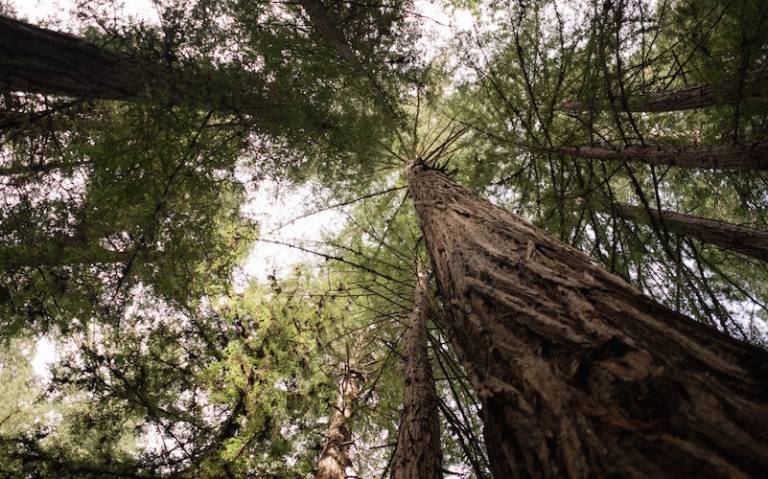Carbon content in forests: Mapping carbon content with NASA
How do you weigh a tree and why would you want to? To understand how forests help to mitigate climate change by absorbing CO2 from the atmosphere via photosynthesis, we need to know how much carbon is taken up by a tree each year.

About half the mass of a tree is carbon, accumulated over its lifetime. So if we can weigh the tree, we know how much CO2 it has absorbed. But to do this directly we would need to cut the tree down and weigh it, which is undesirable and time consuming for the three trillion trees worldwide.
UCL researchers have devised a way to use lasers to capture the 3D shape of trees in great detail. From this we can indirectly get the tree volume and then the mass, without having to cut the tree down. We can then use satellites to go from a single tree to a forest by estimating the height of the forest canopy and then relating that to mass.
The laser measurements also provide new insight into the structure of trees and forests, how and why they grow to the size and shape they do and how this changes with climate and environment.
Due to the importance of forests to the climate and the carbon cycle, national and international space agencies have planned several new missions to help measure them. Two examples are the NASA GEDI (Global Ecosystem and Dynamics Investigator) laser mission, installed on the International Space Station in 2018, and the European Space Agency BIOMASS RADAR mission due to launch in 2022.
Both missions are designed to estimate forest height and biomass in different and slightly complementary ways. However, like all satellite observations of this sort, the missions need to ‘validate’ their estimates by comparing them with ground measurements made at much finer scale.
This is where Professor Mat Disney comes in. He is working with both mission teams to provide fine-scale estimates of canopy height and biomass so that researchers can see how well the space missions are doing. Mat and his team have been collecting data in forests across the globe including Gabon, Ghana, Brazil, Peru, Malaysia, Australia, the US and Europe, as well as at UCL’s campus.
Links
- Professor Mat Disney’s academic profile
- UCL Geography
- Camden’s forest
- The world’s tallest tropical tree in three dimensions (Frontiers in Forests and Global Change)
Image
- Credit: Martha Bergmann, Source: Unsplash
 Close
Close

